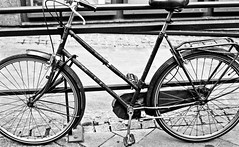No visit to Paris is complete without at least one day spent in the famous labyrinth of a museum in central Paris. Enjoy a mix of architectural appreciation and artistic admiration as you stroll through the halls and courtyard of one of the most famous art museums in the world.

The Louvre Museum is more than simply an art museum. Originally built as a castle on the city's western edge, the city has expanded around the Louvre in modern times. While Philippe Auguste was in power in France from 11-80 to 1223, Paris was the largest city in Europe. The Louvre was originally constructed to protect the border of the city, from the edge of the Seine River. During Louis XIV's reign, the fortress was expanded and during the reign of Henri II and his sons, plans were made to extend the fortress all the way to the Tuileries palace 500 meters west of the Louvre. For this reason the currently standing Grande Galerie was built. While Louis XIII and Louis XIV were in power, the fortress was expanded further, but following the building of Versailles, the Louvre of Paris was temporarily forgotten.
Paris Musuem
Along with the French Revolution came the rebirth of the Louvre as a gallery. Louis XVI lived briefly in the Tuileries palace, and Charles I's rule initiated sculpture galleries, and eventually other exhibition spaces. In 1882, the Tuileries palace was destroyed and the remains are what is seen as the modern Louvre in Paris. Art galleries began to expand across the old fortress until they had completely taken over, as can be seen now. In 1793, it was deemed a museum for the public.
Currently, the Louvre is known in Paris for housing of a variety of collections, which cover thousands of years of artwork from all over the world. The Louvre is celebrated for its immense collection of French historical art, as well as its bridge to modernity. With 8.5 million annual visitors, the Louvre of Paris is known all over the world for its remarkable collection. Some of the most famous works include the Mona Lisa, the Venus de Milo and the Victory of Samothrace.
The Louvre is located in the heart of Paris and is easily accessible from the Metro and many buses. From the Metro, get of on the Palais-Royal-Musee du Louvre station. Bus lines 21, 24, 27, 39, 48, 68, 72, 81, 95 and the Paris Open Tour bus all stop in front of the famous pyramid.
Beyond simply an extensive art gallery, the Louvre in Paris also has many activities for visitors, such as lectures on archaeology and art history, as well as shows, readings films and concerts. Guided tours, workshops and classes are also available with events that change quarterly to interest everyone from newcomers to familiar faces.
The Louvre Museum in Paris has a permanent collection of 35,000 works of art shown in over 60,000 square meters. Visitors should not expect to be able to see everything in one day, and are advised to research their favorite pieces beforehand.
Brief History and Information - The Louvre Museum in Paris JH Lartigue part 1 Tube. Duration : 7.25 Mins.French, 1894-1986 Jacques Henri Lartigue (June 13, 1894 - September 12, 1986) was a French photographer and painter. Born in Courbevoie (a city outside of Paris), he is most famous for his stunning photos of automobile races, planes and fashionable Parisian women from the turn of the century. He started taking photos when he was 6, his subject matter being primarily his own life and the people and activities in it. So, as a child he photographed his friends and family at play running and jumping, racing wheeled soap boxes, building kites, gliders and aeroplanes, climbing the Eiffel Tower and so on. He also photographed many famous sporting events, including automobile races such as the Coupe Coupe Gordon Bennett and the French Grand Prix, early flights by aviation pioneers including Gabriel Voisin, Louis Blériot, and Roland Garros, and tennis players such as Suzanne Lenglen at the French Open tennis championships. Although little seen in that format, many of his earliest and most famous photographs were originally taken in stereo, but he also produced vast numbers of images in all formats and media including glass plates in various sizes, some of the earliest autochromes, and of course film in 2 1/4 square and 35mm. His greatest achievement was his set of around 120 huge photograph albums, which compose the finest visual autobiography ever produced. While he sold a few photographs in his youth, mainly to sporting magazines such as La Vie au Grand Air, in middle age he ...
Keywords: photography
No comments:
Post a Comment